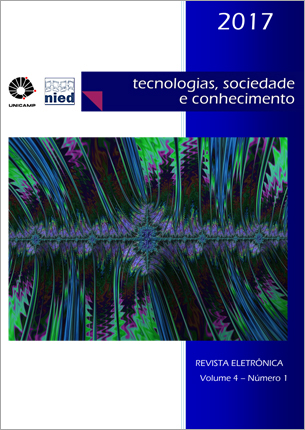Abstract
There are many studies that demonstrate that contact with programming has a positive impact on the development of children's cognitive and socio-emotional skills. Programming has been discussed as a way to stimulate the development of computational thinking in children. However, there are barriers to learning programming; one of them is the fact that most existing programming languages are based on abstractions in the form of texts and symbols that are difficult for them to understand. A potentially easier way to introduce children to programming is Tangible Interfaces. The Tangible Interfaces approach proposes to embed computational elements in concrete materials, creating a didactic resource that combines the advantages of physical manipulation with the multimedia interaction provided by technology.
References
BARANAUSKAS, M.C.C.; MARTINS, M.C.; VALENTE, J.A. Codesignde Redes Digitais: tecnologia e educação a serviço da inclusão social. Penso Editora, 2013.
LUQUE CARBAJAL, Marleny. Design e desenvolvimento de um ambiente de programação tangível de baixo custo para crianças. 2016. Dissertação (Mestrado em Ciência da Computação) –Instituto de Computação, Universidade Estadual de Campinas, 2016

This work is licensed under a Creative Commons Attribution 4.0 International License.
Copyright (c) 2017 Tecnologias, Sociedade e Conhecimento

